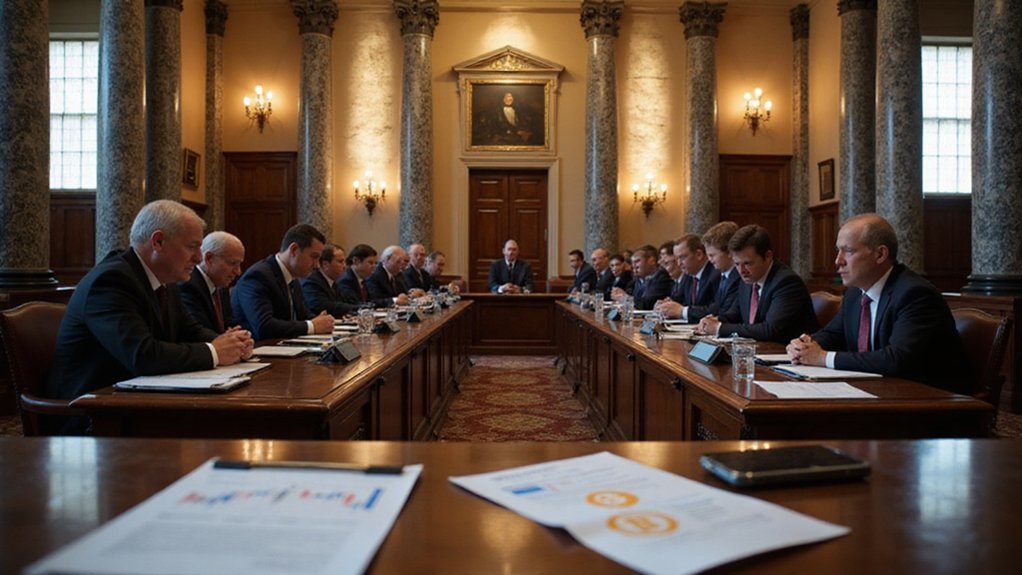The cryptocurrency affiliate marketing landscape of 2025 presents a peculiar paradox: while the underlying assets remain as volatile as ever, the commission structures have achieved a remarkable stability that would make traditional financial institutions blush with envy.
Market leaders like Binance and Coinbase have standardized at the rather generous 50% commission threshold—a figure that would send traditional brokerages into apoplectic shock, yet here represents merely competitive parity.
What sends traditional finance into shock has become merely table stakes in cryptocurrency’s cutthroat affiliate landscape.
The sheer scale of these operations becomes apparent when examining MEXC‘s distribution of over 6,200 BTC across 32,000+ affiliate members, numbers that dwarf many hedge fund assets under management.
Meanwhile, platforms like OKX and BloFin have embraced hourly USDT payouts with the enthusiasm typically reserved for high-frequency trading algorithms, transforming affiliate marketing into something resembling a real-time revenue stream rather than the monthly trickle traditional programs offer.
What’s particularly fascinating is the dichotomy between hardware and software commission structures.
While Ledger and Trezor maintain comparatively modest rates (10-15% respectively), their conversion reliability compensates for lower percentages—a textbook example of volume versus margin optimization.
Software platforms like Koinly and CoinLedger counter with recurring lifetime commissions, effectively creating perpetual revenue streams that compound monthly via PayPal distributions.
The automation revolution has fundamentally altered payout mechanics, with platforms like Margex implementing daily BTC settlements while River processes referral rewards within seven days of transaction completion.
This operational efficiency stands in stark contrast to traditional affiliate networks, where monthly payment cycles remain standard practice despite technological capabilities enabling real-time settlement.
Perhaps most intriguing is KCEX’s audacious offer of 100% commission potential—effectively positioning affiliates as primary revenue beneficiaries rather than secondary participants.
This approach, combined with flexible commission controls across multiple platforms, suggests an industry-wide recognition that affiliate success directly correlates with platform growth. The influence of digital assets on traditional financial markets has created new opportunities for affiliate marketers to bridge both cryptocurrency and stock market audiences. The Web3 advertising revolution has introduced blockchain activity-based targeting, where platforms like Blockchain-Ads deliver an average 6X ROI per affiliate campaign.
The accessibility factor cannot be understated; most major exchanges maintain minimal enrollment barriers, democratizing what was once an exclusive domain. Notable exceptions include Binance’s requirement for a minimum of 5,000 followers on social media platforms, creating a barrier that filters for established influencers.
When Robinhood’s $50 minimum payout requirement seems restrictive within this ecosystem, it becomes clear that crypto affiliate programs have fundamentally redefined industry expectations around both accessibility and profitability.








